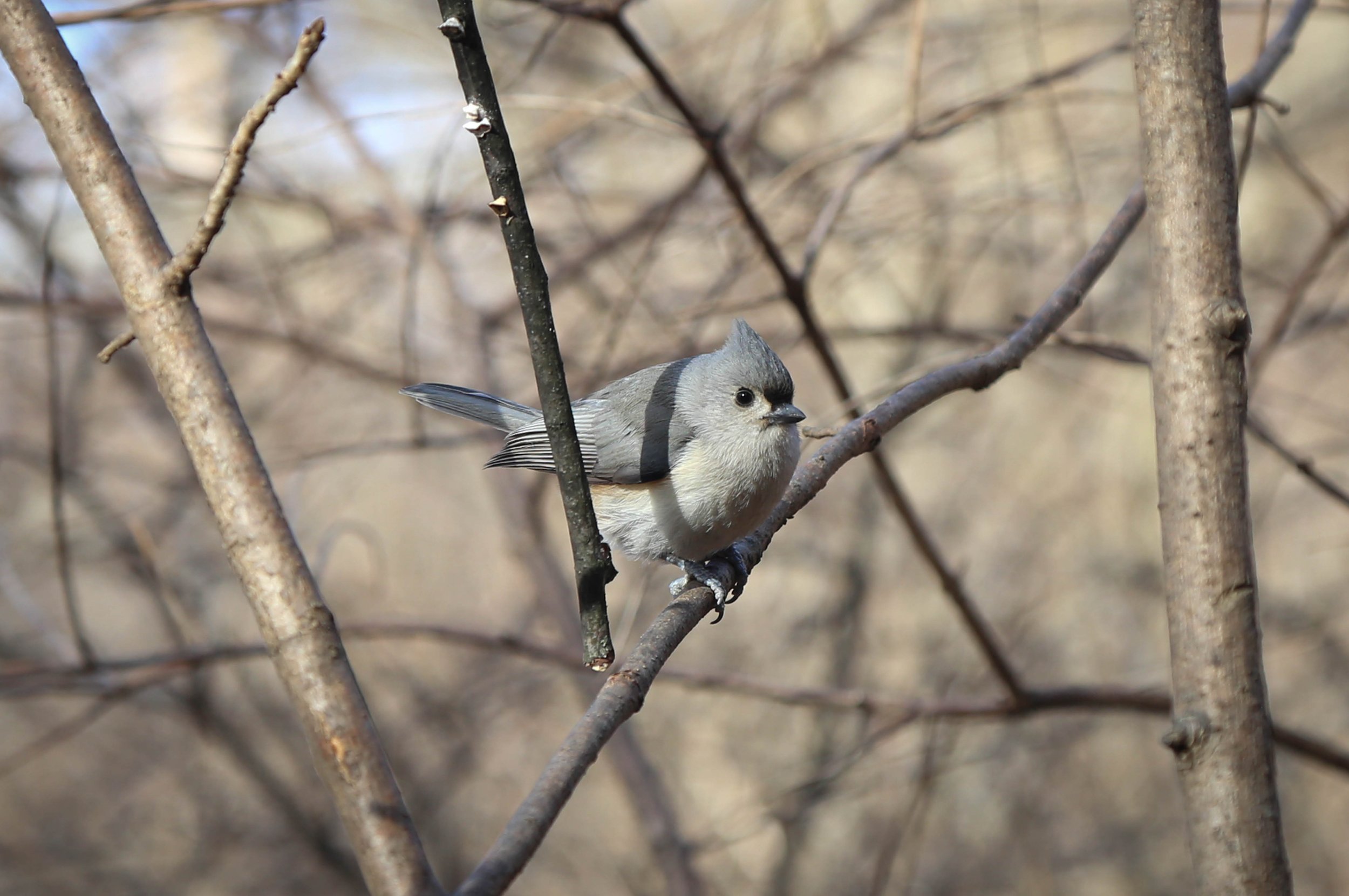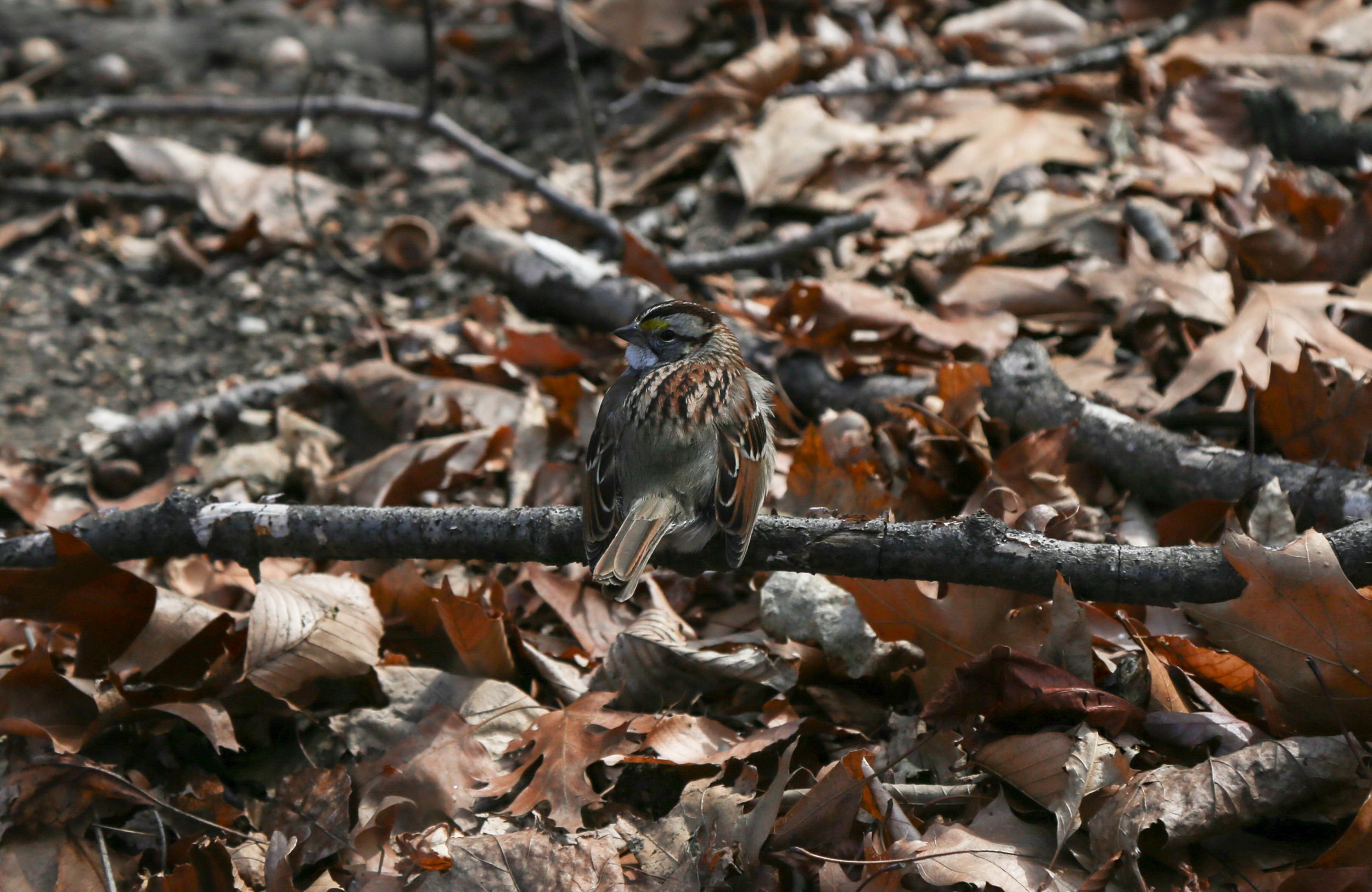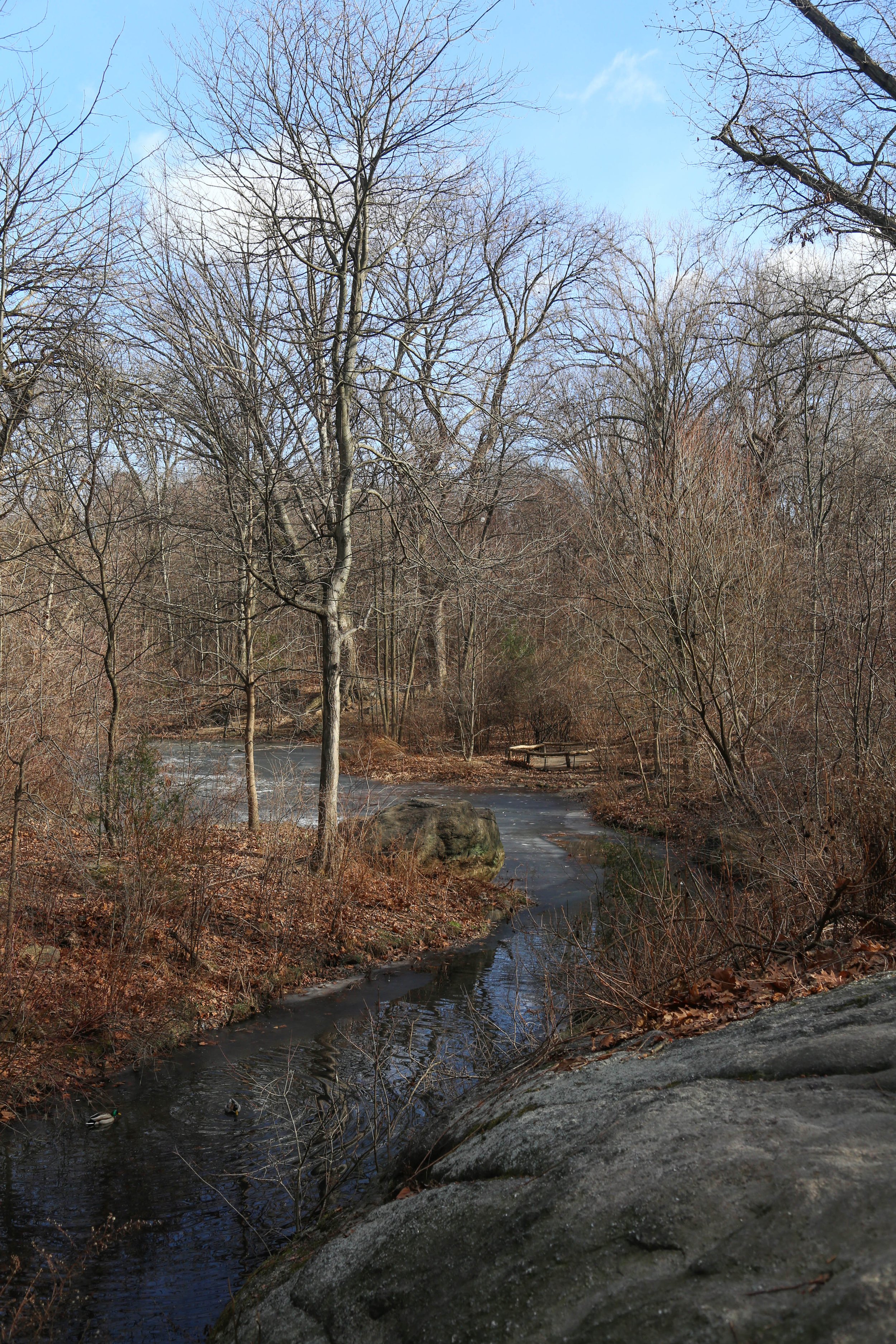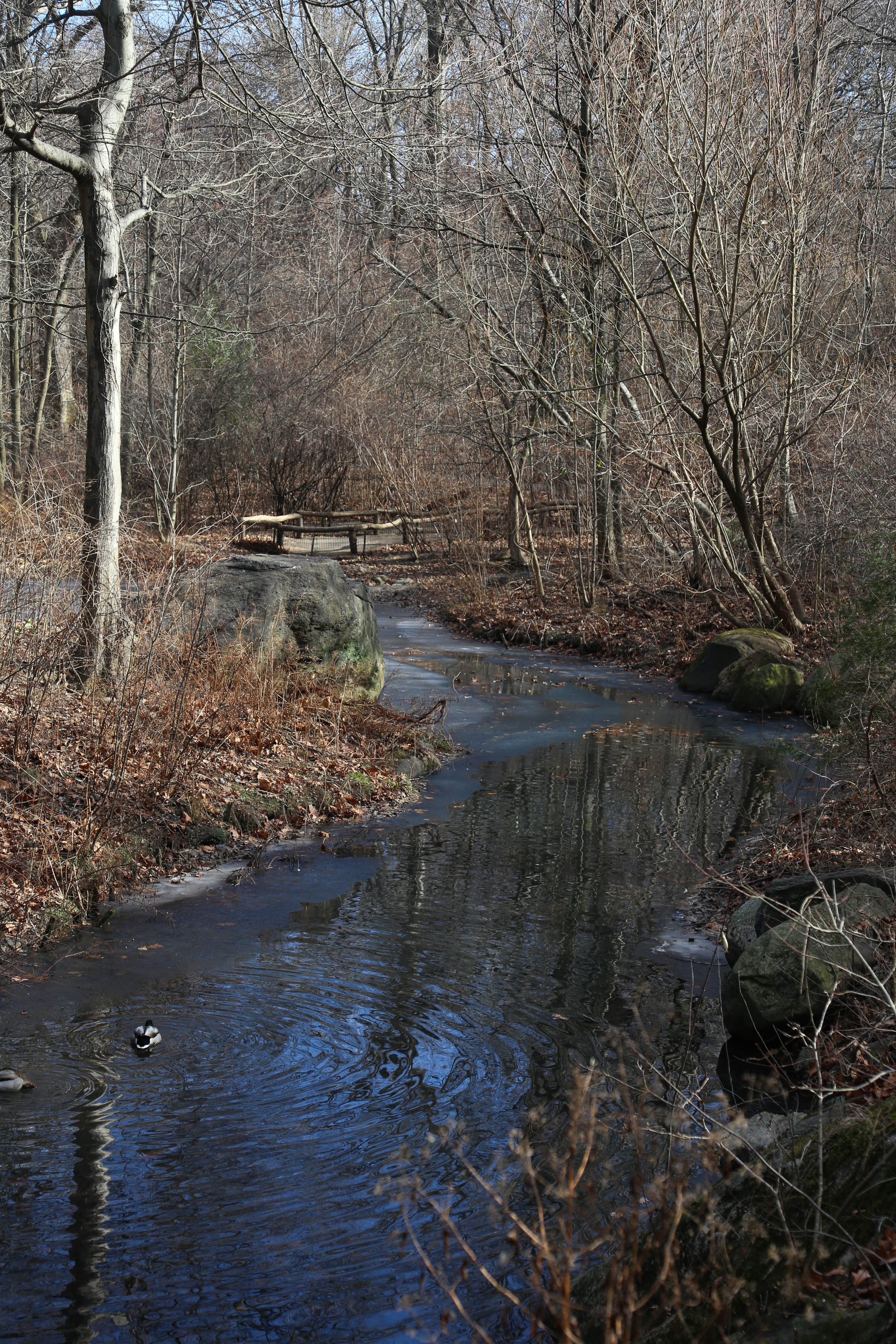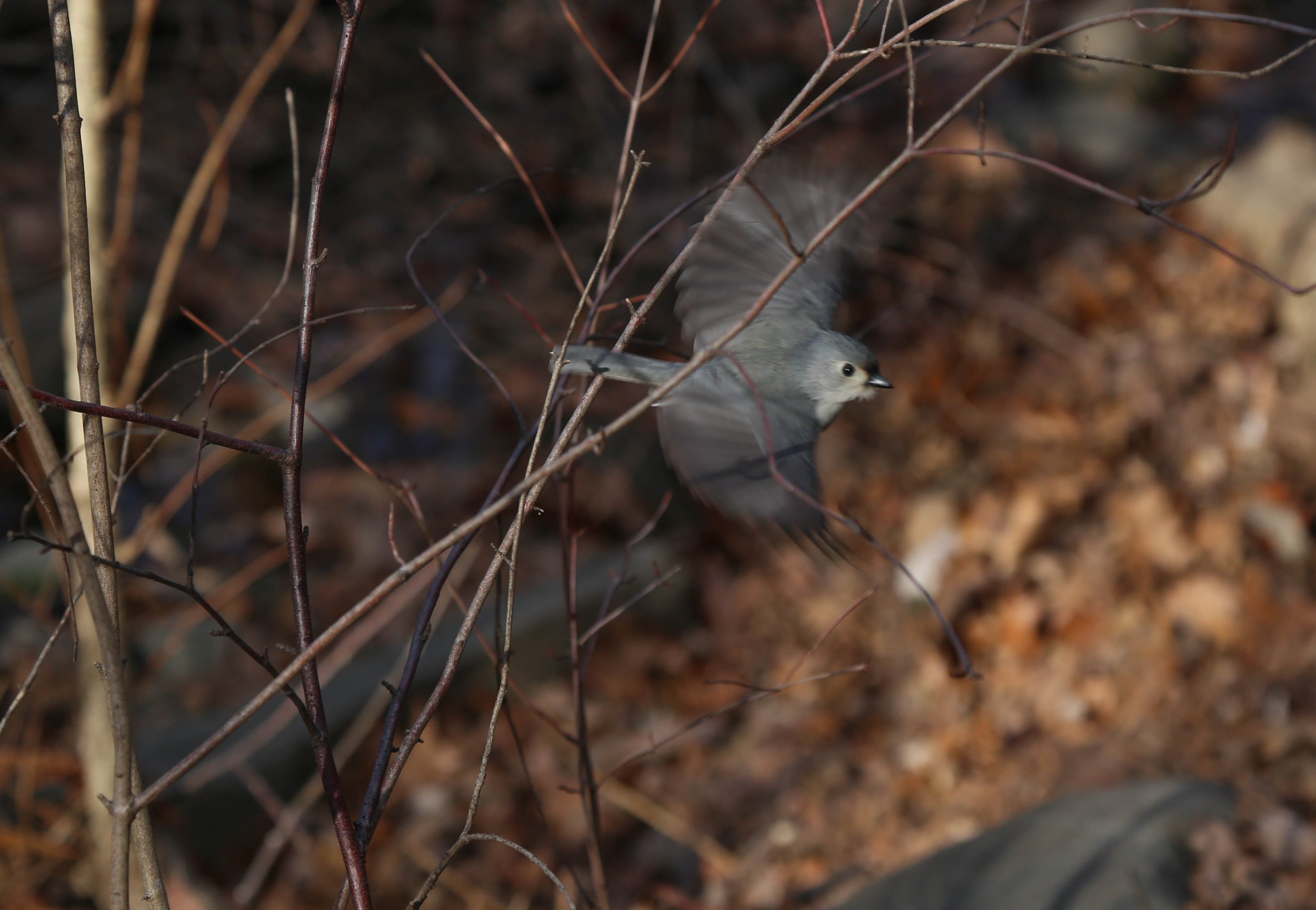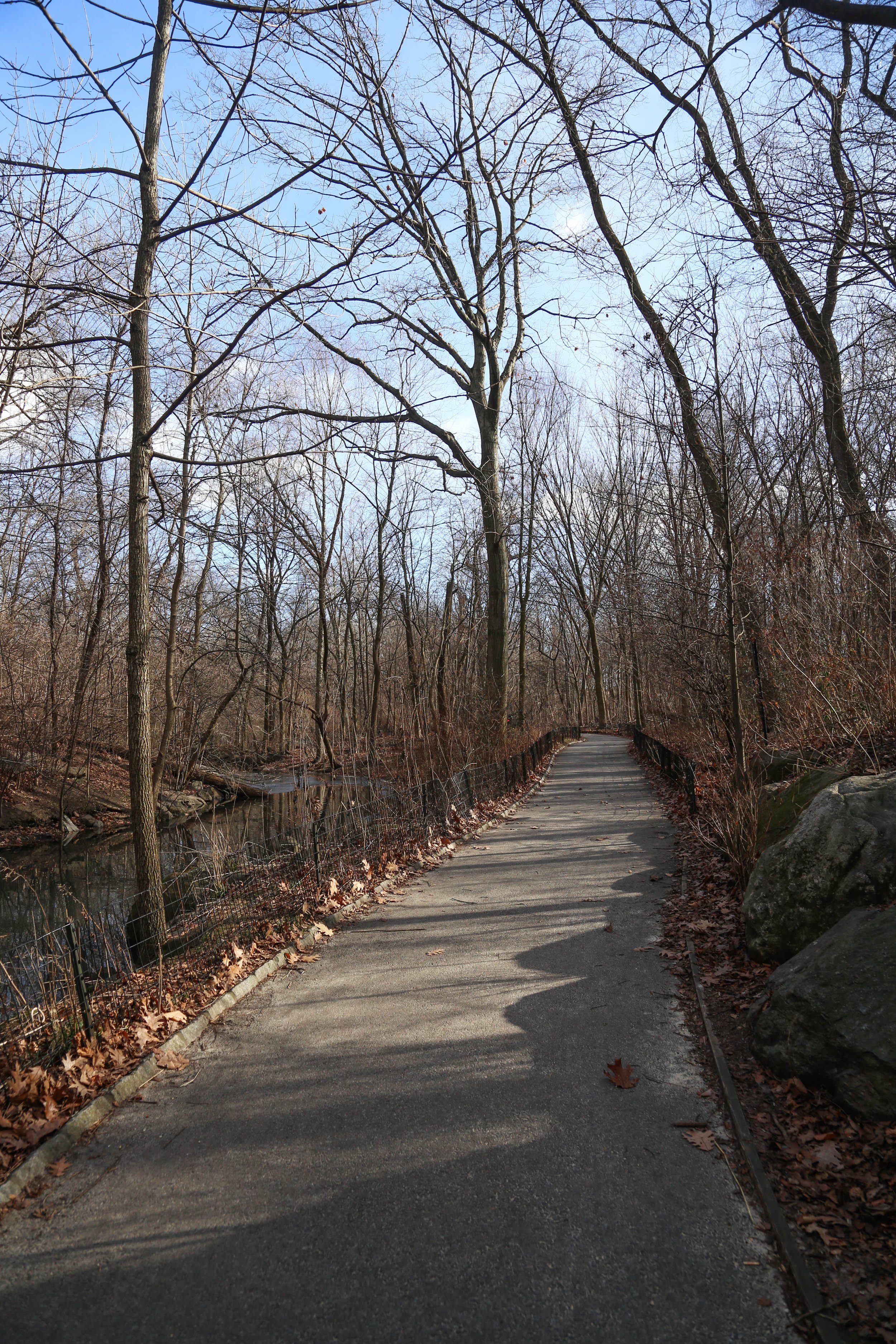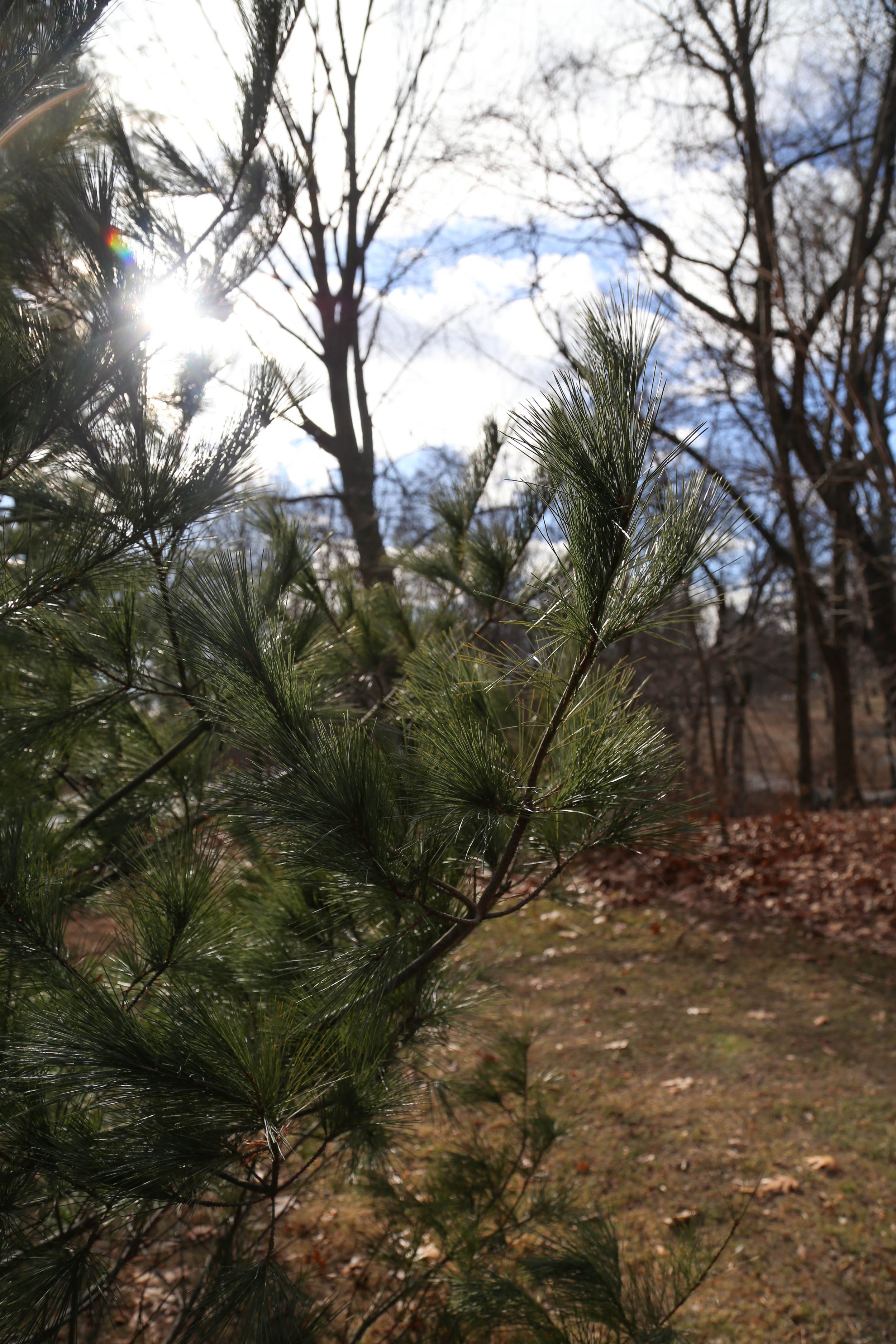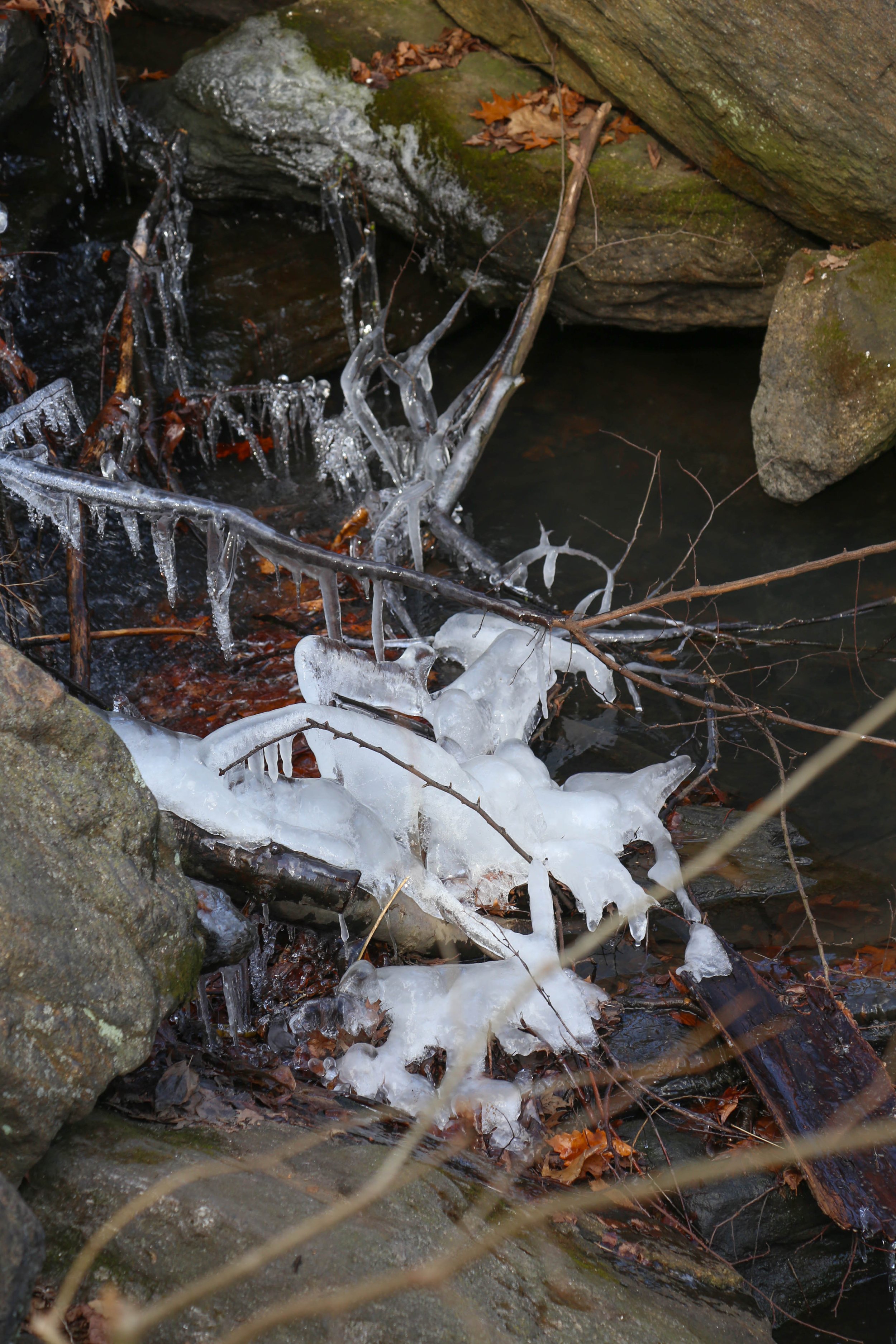I continue to take advantage of the nature at Central Park’s North Woods. There’s always good birdwatching around The Loch and there are usually a red-tailed hawk or two waiting for an easy meal.

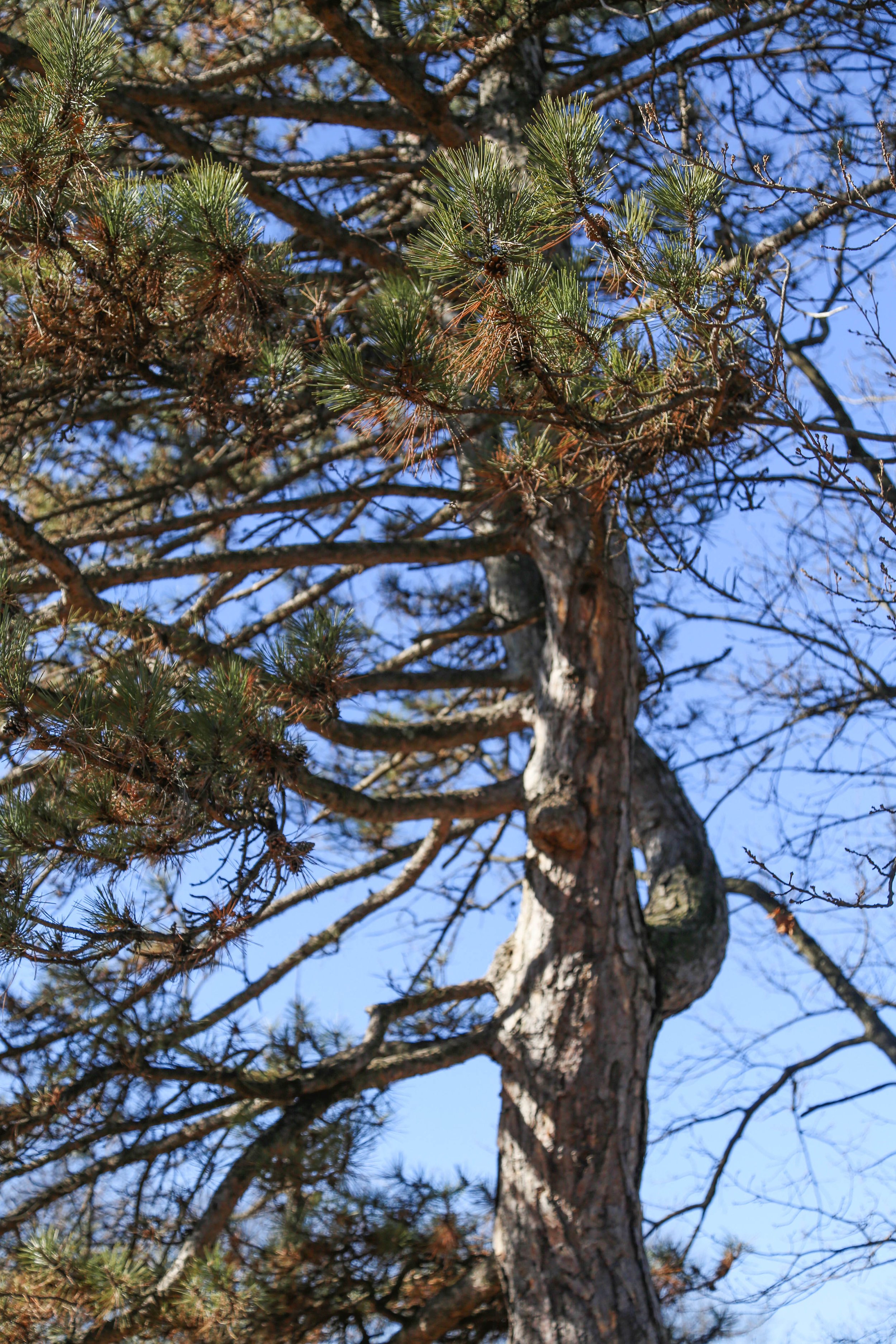



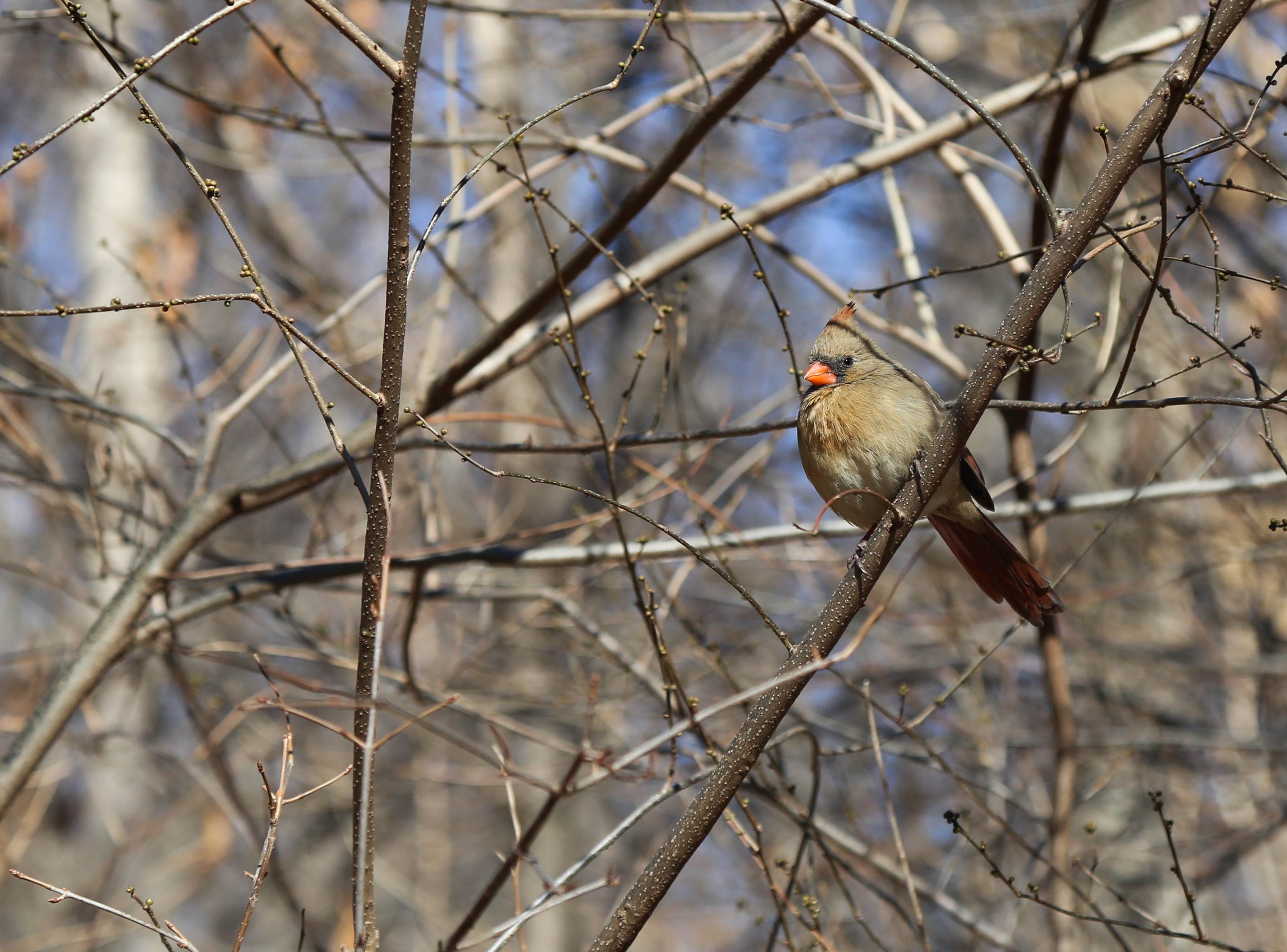



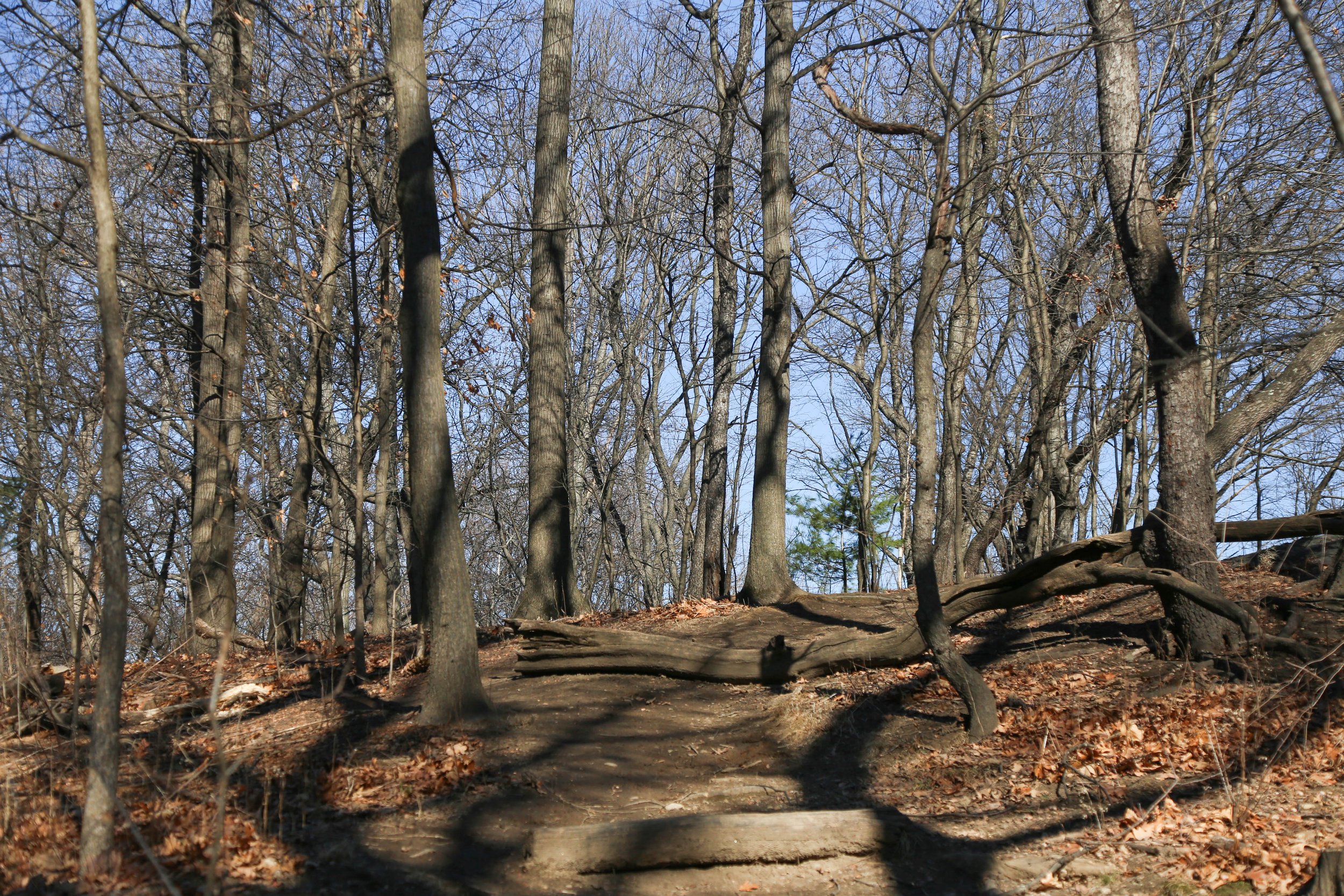


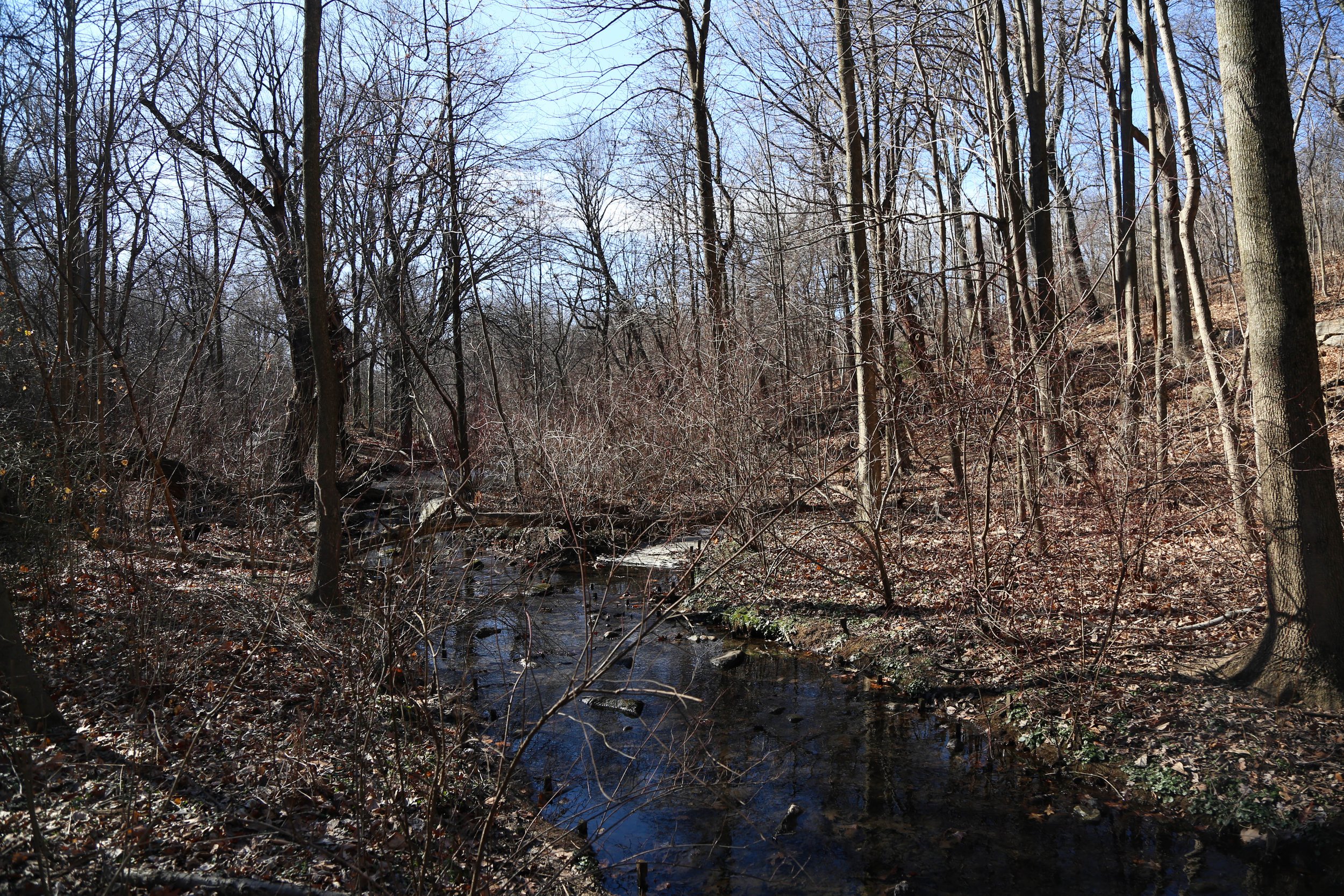
North Woods
It’s the weekend, and the North Woods is a little busier than when I was here during the week. I’m with my husband today. He has never been to this section of the park. We enter the Ravine, and I notice three mallard ducks—two males and one female. Their heads are tucked under their wings. Are they sleeping or just keeping warm on this cold, gray winter morning?
We continue north past Huddlestone Arch and stop to admire another waterfall. We cross over the Loch to the other side and go to a special spot where people sometimes sit, put out their hands with a handful of birdseed, and let the birds perch right on their hands to get the seed. At this spot, there is an abundance of house sparrows, male and female. I’m getting to know the regulars now, which also include common grackles, black-capped chickadees, cardinals, nuthatches, and tufted titmice.
We sit quietly for a time to listen and watch. A squirrel sidles up to me, seemingly disappointed that I did not bring a handout. Having a moment to connect with nature in a large city such as New York is so important, especially during the winter. As we sit, more people approach. It’s time for us to move on so that others can feel the same connection.
It’s cold in New York City today. Temps are in the mid to upper 20s, and the wind gusts make it feel even colder. I head to Central Park anyway because it’s a sunny day, and there are so few of those during the long winters on the east coast. I enter the park on the east side of 96th and head west. I’m headed to Central Park’s largest woodlands, the North Woods. I turn north and pass by the ball field now covered by a large flock of Canada Geese. Ascending to West Drive, I can see the Pool from the crest of the hill as I cross the street. Some of the water is frozen, and there are ducks swimming on the parts that aren’t. I head down the path and stop for a moment to admire a waterfall to my left just before Glen Span Arch. The arch is made of large, rustic stone, and as I walk underneath it, I cross the threshold into a woodland known as the Ravine, entering the North Woods.
The environment is very different from bustling Manhattan. The noise of traffic, sirens, and cars is replaced by birdsong and the sound of flowing water. The watercourse, known as the Loch, predates the park and flows into the Harlem Meer in the far north. I walk slowly along the path, observing the birds, the brown, decaying leaves on the ground, and a holly tree. The path leads me to another waterfall with an outcropping of rocks. I stop, take a photo, and listen to the sound before crossing a wooden bridge.
The bridges within the North Woods are constructed from black locust, chosen for its ability to withstand rot caused by harsh weather. I continue along the path and stop again to watch the birds: Tufted Titmouse, White-throated Sparrow, and Northern Cardinal. It’s so quiet here. I am alone. Suddenly, I realize that, for a moment, I have forgotten I’m in the middle of New York City!
It is true that the North Woods evokes the feeling of wilderness in the Adirondacks. This was the intention of Central Park’s designers, Frederick Law Olmsted and Calvert Vaux. Having hiked the trails of the Adirondack wilderness quite a few times, I can honestly say these gentlemen have done a remarkable job.
